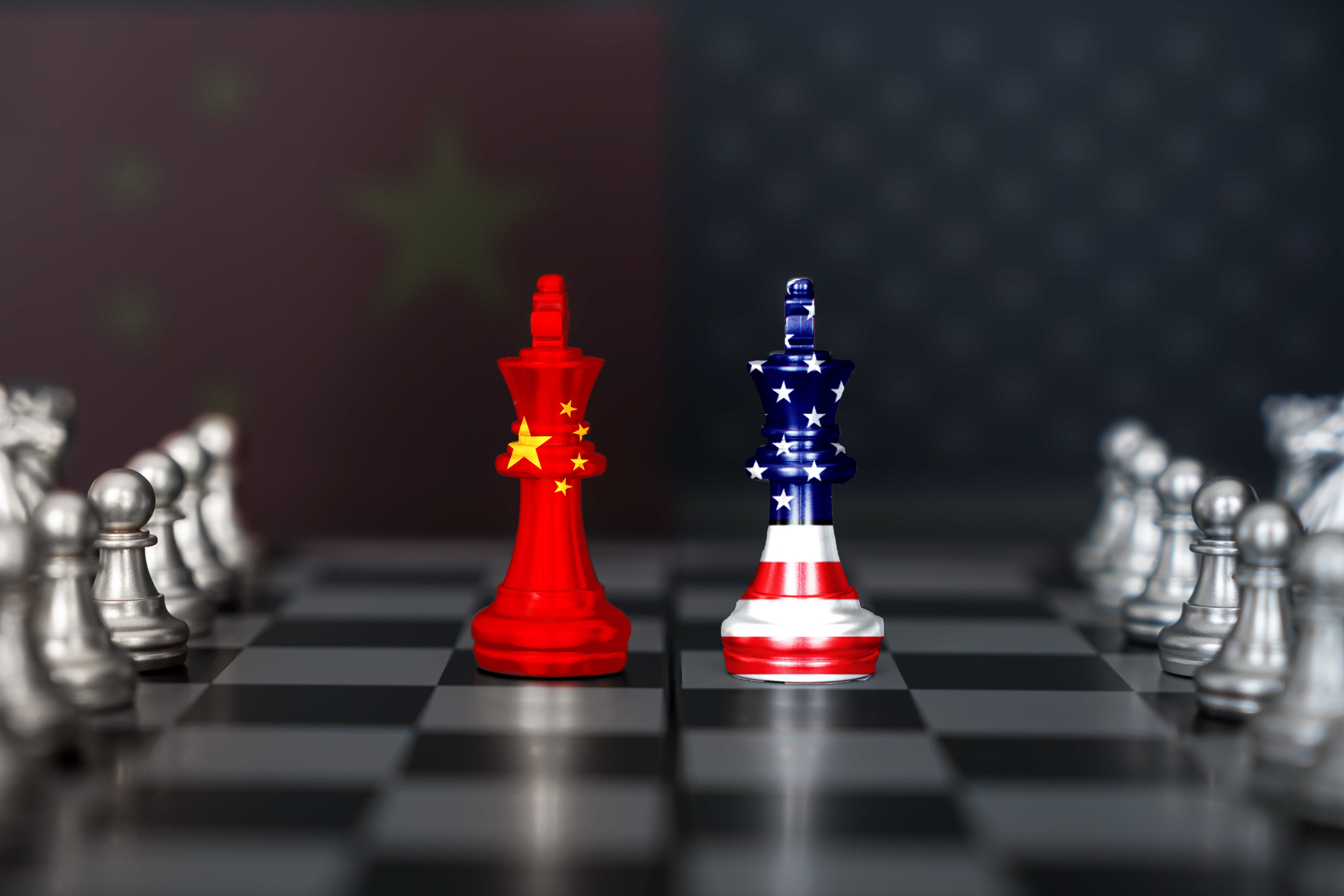What will the unravelling of US-China trade mean for the economy?
What will a US-China decoupling mean for the global economy?

Just 12 short months ago, the then-US Treasury secretary Janet Yellen made a trip to Beijing to deliver the message that the world’s biggest economy had no wish to decouple from the world’s second, its biggest trading partner.
“Our two economies are deeply integrated, and a wholesale separation would be disastrous for both,” Yellen assured her hosts.
Fast forward a year, and Donald Trump has imposed a 145% tariff on Chinese imports. Beijing has responded with a 125% tariff on US goods, plus other measures including restrictions on exports of rare-earth minerals (vital components in a range of high-tech sectors, including defence) to the US.
MoneyWeek
Subscribe to MoneyWeek today and get your first six magazine issues absolutely FREE

Sign up to Money Morning
Don't miss the latest investment and personal finances news, market analysis, plus money-saving tips with our free twice-daily newsletter
Don't miss the latest investment and personal finances news, market analysis, plus money-saving tips with our free twice-daily newsletter
The trade stand-off will benefit neither, and the slow “decoupling” of the two economies is turning into a rapid unravelling.
How much US-China trade is there?
Bilateral trade was worth $582 billion in 2024. The US imports $41 billion worth of smartphones a year from China, or 73% of imports in the category. With laptops, it’s $32 billion at 66%.
In other categories, the value of imports is lower, but China’s dominance is even greater – it accounts for 86% of games consoles, 79% of PC monitors, 76% of toys and 70% of lithium-ion batteries (all 2024 figures from the International Trade Commission).
There are niches where US dependency is even higher, with more than 99% of imported electric toasters, heated blankets, calcium and alarm clocks coming from China.
The US exports a lot less – its bilateral trade deficit last year was $295.4 billion (on US figures). That angers Trump, who believes any trade imbalance means the US is being ripped off.
Has the trade war begun to bite?
The US economy shrank by 0.3% in the first quarter and consumer confidence plummeted, while imports surged as businesses tried to get ahead of the tariffs (announced at the start of April).
Meanwhile, Chinese factory output slowed sharply in April as the tariffs led to an immediate slump in US demand. This week, Apollo Global Management said container traffic from China to the US was already collapsing, and the consequence would be “empty shelves in US stores in a few weeks and Covid-like shortages” for consumers and firms using Chinese products as intermediate goods.
“The US and China are in a full-blown trade war”, and the belief that a grand bargain is in reach is delusional, according to Arthur Kroeber of Gavekal Dragonomics. It seems “Trump is committed to ending US trade with China”
Ending it?
According to the World Trade Organisation director-general, Ngozi OkonjoIweala, merchandise trade between the two countries will slump by 80% as a result of current tariffs – a drop that would have topped 90% without the White House’s recent exemption for smartphones and other tech goods.
Bloomberg Economics projects that 100% US tariffs on Chinese goods would virtually wipe out all US imports from China over the medium term.
“The drop in US-China trade of the magnitudes we are talking about is virtually tantamount to a decoupling of the two economies,” reckons the WTO boss. “This is a phenomenon we’ve talked about before […] and now we’re seeing it emerging.”
What is “decoupling”?
It’s a process of unwinding that has been in train for several years – and was accelerated under Trump’s turbulent first term.
China’s share of US imports fell eight percentage points to 13.4% between 2017 and 2024 according to US official figures, and it now accounts for only a third of US imports from Asia compared with half in 2018.
US foreign direct investment (FDI) in China stood at $127 billion in 2023, but the annual flow of funds is shrinking, says Una Galani on Breakingviews.
Meanwhile, China’s stock of FDI in the US fell to $44 billion in 2023 – down 16% since 2019 – while the annual flow of funds has been “negative since 2020, implying that Chinese investors have been pulling money from American projects”.
Less tangible metrics also suggest a weakening of the relationship, too. The number of US students studying in China has collapsed 20-fold over the past decade to fewer than 1,000. In the US, India has overtaken China as the largest source of foreign students.
Companies, financial institutions and even university students have all long been “doing their bit to speed decoupling”, says Galani. “In that respect, Trump’s second China trade war is pushing on an open door.”
Who will it hurt the most?
Last year, an IMF study projected that a full decoupling of the Chinese and Western economies – essentially splitting the world into two trading blocs – would slash 7% from global GDP in the longer term, a loss equivalent to $7.4 trillion, or about the size of the French and German economies combined.
The IMF reckons developing economies would be hit hardest if Washington and Beijing were to cut ties. It must be hoped that this is an unlikely, worst-case scenario.
The problem, in terms of the fallout for the global economy, is that both sides appear to think they have less to lose than the other. US Treasury secretary Scott Bessent, for example, is confident he has the upper hand.
Is Scott Bessent right?
His optimism is misplaced, says The Economist. The US imports a lot of vital stuff from China, from electronics to antibiotics. China imports much less, and what it does import is far more easily replaced from other sources.
China will hurt, but the threat should not be overstated – the US accounts for only about 14% of all Chinese exports.
Moreover, Beijing holds roughly $800 billion in US Treasuries (government debt). That’s less than 10% of the total (down from almost 30% in 2011). But any sell-off would impact the attractiveness of US debt and its currency.
China looks far better placed than the US to withstand the pain of a trade war, and “Trump has undermined his case by bullying his allies”, says The Economist. “If America loses this trade war, its pain will be self-inflicted.”
This article was first published in MoneyWeek's magazine. Enjoy exclusive early access to news, opinion and analysis from our team of financial experts with a MoneyWeek subscription.
Get the latest financial news, insights and expert analysis from our award-winning MoneyWeek team, to help you understand what really matters when it comes to your finances.
Simon Wilson’s first career was in book publishing, as an economics editor at Routledge, and as a publisher of non-fiction at Random House, specialising in popular business and management books. While there, he published Customers.com, a bestselling classic of the early days of e-commerce, and The Money or Your Life: Reuniting Work and Joy, an inspirational book that helped inspire its publisher towards a post-corporate, portfolio life.
Since 2001, he has been a writer for MoneyWeek, a financial copywriter, and a long-time contributing editor at The Week. Simon also works as an actor and corporate trainer; current and past clients include investment banks, the Bank of England, the UK government, several Magic Circle law firms and all of the Big Four accountancy firms. He has a degree in languages (German and Spanish) and social and political sciences from the University of Cambridge.
-
 ‘Why I have ditched my Help to Buy ISA for cash savings and the stock market’
‘Why I have ditched my Help to Buy ISA for cash savings and the stock market’Without the 25% bonus, my Help to Buy ISA is effectively redundant, says MoneyWeek writer Sam Walker.
-
 Is your inheritance tax allowance cut if you sell to downsize or sell your home to pay for care?
Is your inheritance tax allowance cut if you sell to downsize or sell your home to pay for care?Downsizing relief is a little-known benefit that could save your loved ones tens of thousands of pounds in inheritance tax after you’ve died.
-
 The war dividend – how to invest in defence stocks as the world arms up
The war dividend – how to invest in defence stocks as the world arms upWestern governments are back on a war footing. Investors should be prepared, too, says Jamie Ward
-
 Did COP30 achieve anything to tackle climate change?
Did COP30 achieve anything to tackle climate change?The COP30 summit was a failure. But the world is going green regardless, says Simon Wilson
-
 The global defence boom has moved beyond Europe – here’s how to profit
The global defence boom has moved beyond Europe – here’s how to profitOpinion Tom Bailey, head of research for the Future of Defence Indo-Pac ex-China UCITS ETF, picks three defence stocks where he'd put his money
-
 Will the internet break – and can we protect it?
Will the internet break – and can we protect it?The internet is a delicate global physical and digital network that can easily be paralysed. Why is that, and what can be done to bolster its defences?
-
 Canada will be a winner in this new era of deglobalisation and populism
Canada will be a winner in this new era of deglobalisation and populismGreg Eckel, portfolio manager at Canadian General Investments, selects three Canadian stocks
-
 Jim O’Neill on nearly 25 years of the BRICS
Jim O’Neill on nearly 25 years of the BRICSJim O’Neill, who coined the acronym BRICS in 2001, tells MoneyWeek how the group is progressing
-
 'My predictions for the next 25 years'
'My predictions for the next 25 years'Opinion What will the world look like when MoneyWeek celebrates its 50th birthday? Matthew Lynn shares his predictions
-
 How have central banks evolved in the last century – and are they still fit for purpose?
How have central banks evolved in the last century – and are they still fit for purpose?The rise to power and dominance of the central banks has been a key theme in MoneyWeek in its 25 years. Has their rule been benign?